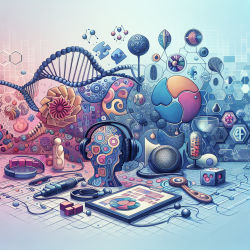Introduction
As practitioners dedicated to improving outcomes for children with autism spectrum disorders (ASD), staying informed about the latest research is crucial. A recent study, "Support for Calcium Channel Gene Defects in Autism Spectrum Disorders," sheds light on the genetic underpinnings of ASD and offers insights that can be applied in therapeutic settings. This blog will explore the study's findings and discuss how they can be integrated into practice to enhance therapeutic outcomes for children with ASD.
The Study at a Glance
The study conducted a targeted association analysis of calcium channel genes (CCG) using existing genome-wide association study (GWAS) data. It focused on 10 genes encoding the α1 subunit proteins of calcium channels, examining their association with ASD in a sample of 2,781 parent/affected child trios. The results identified four single-nucleotide polymorphisms (SNPs) in three CCGs associated with ASD, supporting the hypothesis that common CCG SNPs play a role in ASD susceptibility.
Implications for Practitioners
Understanding the genetic components of ASD can significantly impact therapeutic approaches. Here are some ways practitioners can utilize this research:
- Personalized Therapy: By recognizing the genetic variations associated with ASD, practitioners can tailor interventions to better suit individual genetic profiles, potentially improving therapy effectiveness.
- Informed Decision-Making: Knowledge of genetic predispositions can guide decisions about which therapeutic strategies might be more effective for certain individuals, allowing for more targeted and efficient interventions.
- Enhanced Collaboration: Collaborating with geneticists and researchers can provide a more comprehensive understanding of a child's unique needs, leading to more holistic care.
Encouraging Further Research
While this study provides valuable insights, it also highlights the need for continued research into the genetic factors contributing to ASD. Practitioners are encouraged to stay engaged with ongoing research and consider participating in studies that explore the genetic aspects of ASD. This involvement can contribute to a deeper understanding of ASD and the development of more effective interventions.
Conclusion
The findings from the study on calcium channel gene defects in ASD offer promising avenues for enhancing therapeutic strategies. By integrating these insights into practice, practitioners can contribute to better outcomes for children with ASD. Continued research and collaboration across disciplines will be essential in unlocking the full potential of these findings.
To read the original research paper, please follow this link: Support for calcium channel gene defects in autism spectrum disorders.










